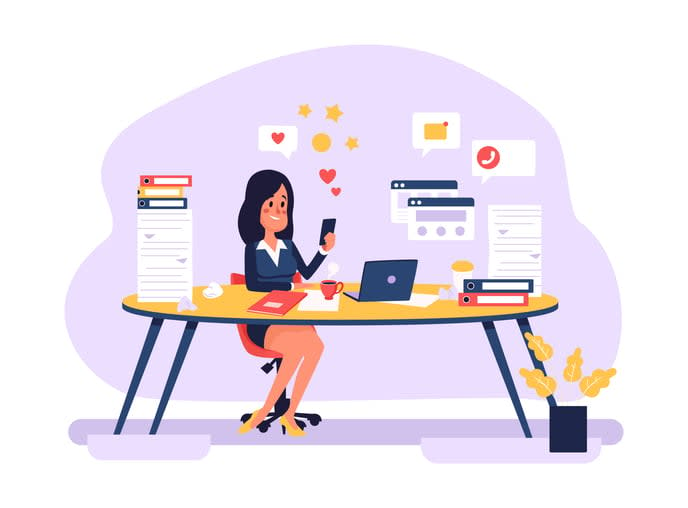Are distractions constantly derailing your focus at work? Modern work bombards us with a relentless stream of notifications, multitasking demands, and the lure of social posts — each capable of breaking our concentration. How do we reclaim our attention span and bolster productivity in a world seemingly engineered to distract us? This article explores powerful strategies and tools to overcome distractions and improve focus.
Key takeaways
- Distractions significantly impair our productivity and cognitive performance. They stem from many internal and external factors, such as physiological issues, mental wanderings, social media, and office noise.
- Effective strategies to minimize distractions include planning tasks, creating a focused workspace by disabling apps or notifications.
- You can manage time with techniques like the 52-17 rule, setting boundaries around technology use, and employing mindfulness and meditation practices.
- Kumospace is an innovative virtual platform designed to foster a focused work environment, offering features such as customizable office designs, functional meeting areas, and the ‘Focusing’ status, which enables a deeper engagement with tasks and minimizes digital interruptions.
Understanding distractions: causes and effects
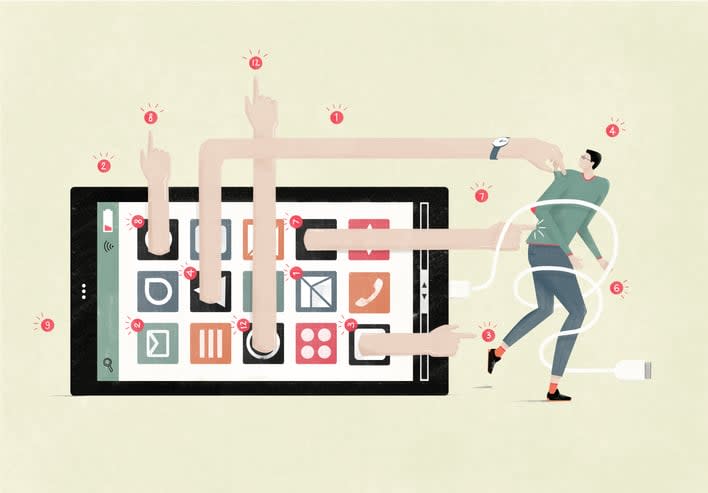
Time-stealing distractions can be as subtle as the flicker of a new email notification or as persistent as the nagging worries. These diversions, whether internal or external, can yank our attention away from what we ought to be focusing on, diverting our attention.
A recent survey found chatty coworkers (23%), connectivity issues (22%) and cell/smartphones (21%) were the primary distractions for office workers, issues that apply to both remote and in-house workers.
The reasons behind our susceptibility to distractions are varied, but the consequences
of mounting distractions are:
- A detrimental impact on productivity, motivation and management
- Impact on our cognitive performance
- They limit our attention span
- Compete for the same mental space as our primary tasks
- Can harm leaderships’ view of virtual offices and remote working
Internal Distractions
Have you ever noticed how hunger pangs or the nagging ache of an uncomfortable chair can derail your train of thought? These physiological issues, along with daydreaming, are the distractions that lurk within us. Stress and personal concerns act as internal saboteurs, stealthily distracting and preventing us from fully engaging in work.
Worse still, when sleep evades us, from leadership to knowledge workers, it’s not just our energy that’s sapped—our ability to focus and execute tasks is compromised.
External distractions
While grappling with our internal distractions, some common external distractions that can divert us include:
- A buzzing phone or notification
- The buzz of office gossip or chatter
- Ongoing social media conversations
- Email alerts
- Background noise
These external distractions form a relentless assault on our concentration.
Cell phones and their apps can lead to high-risk behavior such as distracted driving—a perilous testament to the power of external distractions. In the office, the risk is typically less, but the impact over time can be just as damaging to business productivity.
The impact on performance
Embarking on the path of mindfulness and meditation, we can discover an oasis of calm and clarity in a desert of distractions. This practice helps sharpen executive attention and optimizes the efficiency of our mental resource allocation, especially during important tasks that demand high levels of attention. Those who invest time in extensive mindfulness training notice improved performance in tasks requiring sustained attention and perceptual discrimination.
Different meditation forms, including focused attention meditation, bolster the skills we need to navigate through distractions and maintain a steadfast focus on the tasks at hand. Additionally, developing an awareness of our distraction patterns can empower us to reduce their occurrence and enhance our periods of focus.
Strategies for minimizing distractions
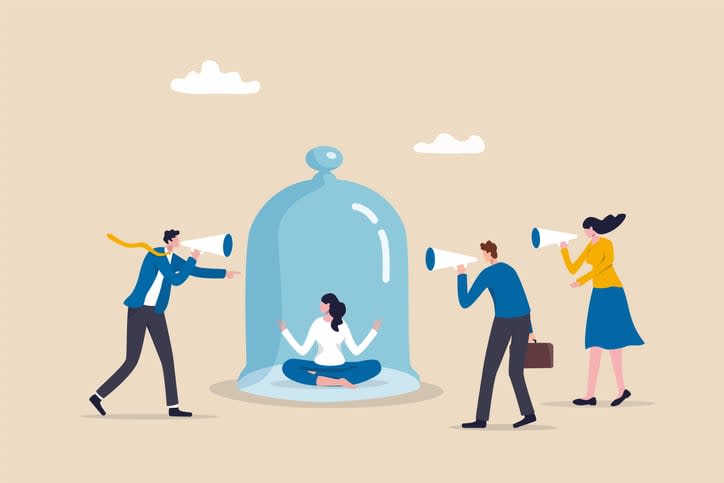
When aiming to minimize distraction, preparation is our first line of defense. By planning ahead, identifying and prioritizing tasks, we lay the groundwork for a productive day ahead. Making challenging goals achievable by breaking them down into smaller, manageable pieces helps us complete them without the interference of distractions.
Simple acts like turning off notifications on our digital devices can be incredibly effective, allowing us to give our full attention to the task at hand. And in the battlefield of our workspace, visual reminders serve as banners that keep our focus aligned and reduce the risk of diversion.
Creating a focused workspace
In the quest for productivity, the castle in which we work—the workspace—must be a sanctuary of comfort and order. A comfortable chair, a well-lit desk, and a clutter-free environment are more than just amenities; they are vital components of a focused workspace that sustains our attention and productivity throughout the process.
A tidy desk not only pleases the eye but also saves precious time otherwise spent in a frantic search for misplaced items, thus minimizing distractions. And in the digital realm, tools like Kumospace’s ‘Focusing’ status act as a magic spell, turning off our camera, microphone, and sound, creating a virtual bubble of concentration that shields us from technological interference while offering the flexibility to re-engage with the world when necessary.
Prioritizing tasks and time management
With deadlines looming, mastering the art of time management and task prioritization becomes essential. The 52-17 rule and the Pomodoro technique are not mere numbers; they are rhythms that guide our work-break cycles, proven to boost productivity and keep distractions at bay.
Employing a time management matrix to categorize tasks by urgency and importance is like a compass that directs our efforts to where they are most needed, fostering effective time management and focus. Yet, it’s crucial to recognize when we are genuinely delayed by unforeseen circumstances, as opposed to when we fall into the trap of procrastination through the many distractions. . Find out how to avoid procrastinating in our post, “Unpack the Causes of Procrastination: Tips for Better Productivity.”
Another tip, the rule of 4, suggests limiting serious concentration to four hours, with experience showing workers get grumpy or frustrated the longer they overstretch their effort.
Setting boundaries and limiting technology use
In the digital age, our devices often feel like extensions of ourselves, but left unchecked, they can become a painful mix of regular or random distractions. Information overload from our cell phones, whether through calls, texts, gaming, or social media, can disrupt our concentration.
To reduce interruptions from our devices, we can:
- Erect digital walls with app blockers like Stay Focused
- Employ digital well-being tools
- Set screen time goals
- Use timers to meet deadlines
- Activate features like ‘Do Not Disturb’
By taking control of our technology use and managing the barrage of notifications, we can regain focus and productivity.
Some strategies for managing digital distractions include:
- Allocating specific times for checking emails and social media
- Using apps like Freedom and RescueTime to block distractions
- Communicating clear digital availability boundaries with colleagues
- Engaging in open dialogue with family and friends about personal digital boundaries
Implementing these strategies can help prevent digital demands from consuming our time and allow us to manage digital distractions more effectively. For smartphone junkies, there’s even a desk lock-box you can buy to seal your cell away for a few hours, while keeping an eye out for emergency calls.
Experts suggest crafting a daily schedule that delineates times for focused work, collaboration, and personal time, which includes managing digital distractions. And when we adhere to these digital boundaries and reach our productivity targets, self-rewarding can be a powerful motivator, increasing job satisfaction.
Kumospace: the solution for reducing distraction
Enter Kumospace, a virtual platform meticulously designed to minimize the distractions that plague the workplace and create an environment that is a haven for focus. By addressing the common distractions that infiltrate our workspaces, Kumospace offers a solution that boosts productivity and allows users to concentrate with a fresh intensity.
Kumospace is an innovative platform for remote teams and virtual office workers, illuminating the path to a more productive work life, free from the shackles of constant distractions, while boosting vital collaboration to solve problems.
Work in a focused environment
Kumospace goes beyond being just a platform for virtual meetings; it helps you create focused environments. With customizable office designs tailored to the needs of each individual or team, functional meeting areas that foster collaboration without chaos, and seating charts that promote organization, Kumospace helps you design spaces for concentration on the tasks of the day.
The creation of distraction-free zones within this digital space allows individuals to maintain focus and concentrate on their tasks without the external interference. By providing a virtual office with focused workspaces, Kumospace champions productivity by minimizing disruptions for remote teams, paving the way for uninterrupted work sessions.
Kumospace creates a focused environment that reduces the likelihood of distracted working, a testament to its innovative design.
Engaging deeply with tasks
Kumospace’s ‘Focusing’ status is a declaration of your need to concentrate, silencing the environmental sounds that divert your attention, helping us remain immersed in vital or tricky tasks. The virtual office design encourages a culture of getting work done, leading to a more profound level of engagement with work and a greater sense of accomplishment upon task completion. By offering features that signal when a user is concentrating and endorsing the act of single-tasking, Kumospace provides a focused workspace that encourages deep task engagement, helping those who seek to maximize their productivity whether they are multitasking or focusing on a single task.
The power of mindfulness and meditation
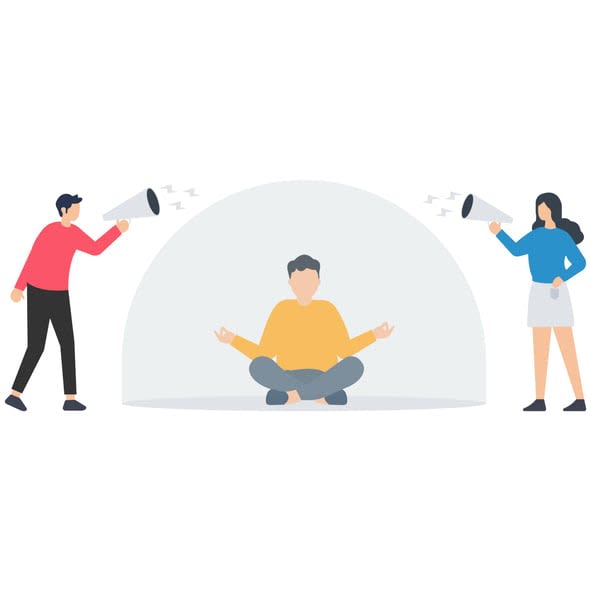
The respected practices of mindfulness and meditation, once reserved for the contemplative, are powerful tools for the modern professional. Mindfulness, with its emphasis on full attention to the present, and meditation, with its various techniques, offer sanctuary and focus.
When the mind begins to wander during meditation, practitioners are taught to dismiss the wandering thought without self-judgment and return to their focal point, through techniques such as counting breaths—a practice that hones focus and curtails distractions.
Additionally, being mindful of one’s feelings or sensations during meditation helps increase attention to the present, a cornerstone of mindfulness that helps improve focus in everyday life.
Supporting these efforts, workplace or at-home Yoga is a powerful way to bring inner calm and peace before starting on a hectic day’s work.
The benefits of mindfulness
Mindfulness meditation is not a one-size-fits-all solution; individual needs, quirks and differences influence the extent of benefits one can reap from being mindful. Yet, incorporating mindfulness techniques into our daily routine can improve attention spans and reduce stress levels.
Whatever your state of mind, the regular practice of mindfulness offers widespread advantages, fostering a state of calm and focused awareness to improve personal well-being and professional performance.
Meditation techniques and breathing better
Among the many meditation techniques, focused attention meditation is a beacon for those seeking to sharpen their skills. By concentrating on a specific object, such as breathing, helps to manage distractions and anchor the mind in the present.
Beginners can find benefits from simple mindfulness exercises, focusing on the natural movement of breathing while maintaining an open, accepting attitude—a gentle introduction to the world of attentional control that can improve one’s ability to manage distractions.
Overcoming inattentional blindness
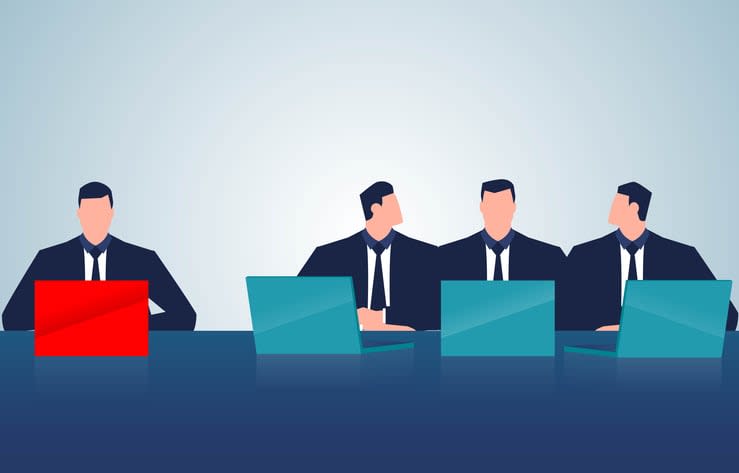
Inattentional blindness is a peculiar phenomenon where people fail to notice unexpected yet highly visible events or objects because their attention is engaged elsewhere. It’s a stark reminder of the limitations of our attention and the selective nature of our perception.
Strategies that address and manage selective attention can be crafted to overcome inattentional blindness, thereby expanding our cognitive bandwidth to include the unexpected.
What is inattentional blindness?
Inattentional blindness can best be described as a cognitive blind spot—it’s what happens when we’re so focused on a particular task or element that we become oblivious to other, perhaps surprising, elements in our field of vision or hearing.
This phenomenon is not just about sight; it’s akin to navigating through a world on autopilot with the eyes closed to everything but the task at hand. This often results in us moving around obstacles without consciously registering them and later having no recollection of them.
The essence of inattentional blindness is the trade-off between focus and awareness; when we dial up the former, we inadvertently turn down the latter, causing us to overlook details that fall outside our narrow beam of attention. And just as it affects our visual perception, it can also affect our auditory senses, leading us to miss unexpected sounds when we are focused on other auditory tasks.
Strategies for overcoming inattentional blindness
To counter inattentional blindness, we can adopt the practice of deliberately expanding our observation to include unexpected elements, thereby reducing the chances of overlooking the unforeseen.
Games and activities that demand quick reactions and attention can sharpen our observational skills, training us to detect stimuli that we might typically miss. Attention training exercises, such as mindfulness and self-regulation strategies, can also be valuable in lessening the effects of inattentional blindness by bolstering our attentive capacities.
Regularly engaging with tasks that require focused attention can build up resilience to inattentional blindness, making it less likely for us to miss unexpected events over time. Some strategies to enhance our ability to detect unexpected events include:
- Simple self-reminders to remain aware of our surroundings
- The habit of looking for both the anticipated and unanticipated to capture a fuller picture of our environment
- Incorporating mindfulness techniques into our daily routines to maintain a high level of attention
By implementing these strategies, we can decrease the likelihood of inattentional blindness leading us astray. Kumospace has a fun Tetris-style game built-in as part of the office layout to focus the mind and improve your reaction speed.
Summary
From internal battles with wandering thoughts to external skirmishes with technology and noise, distractions are formidable opponents in the quest for productivity. Yet, with the strategies and insights discussed, we can navigate through these distractions toward the goal of sustained focus.
Embracing mindfulness, optimizing our workspaces, and leveraging tools like Kumospace can transform our workdays from frantic multitasking to serene productivity. Remember, the power to enhance focus and minimize distractions lies within our grasp; it’s a matter of strategy, awareness, and sometimes, a touch of technological assistance.
As we conclude this expedition, let the guiding principles of preparation, prioritization, and mindfulness light the way to a more attentive and efficient you. Take these tools, apply them with diligence, and watch as the once turbulent seas of distraction calm into tranquil waters of focused achievement. May your journey be one of deep engagement, unwavering attention, and profound productivity.
Frequently asked questions
Inattentional blindness is when you fail to notice visible but unexpected objects or events because your attention is focused elsewhere. This can affect your work by causing you to overlook important details or changes, leading to errors or missed opportunities.
Kumospace can help reduce distractions in a remote work environment by offering a focused virtual environment with customizable office designs and features such as the 'Focusing' status, which mutes environmental sounds. Other workers will see you are busy through the headphones icon by your avatar, and know not to disturb you.
To minimize distractions at work, consider planning your tasks in advance, breaking down larger goals, turning off notifications, maintaining a tidy workspace, using time management techniques, and setting boundaries for technology use. These strategies can help improve focus and productivity.
Yes, mindfulness and meditation can indeed improve your focus and productivity by training your attention, reducing stress, and enhancing cognitive performance.
